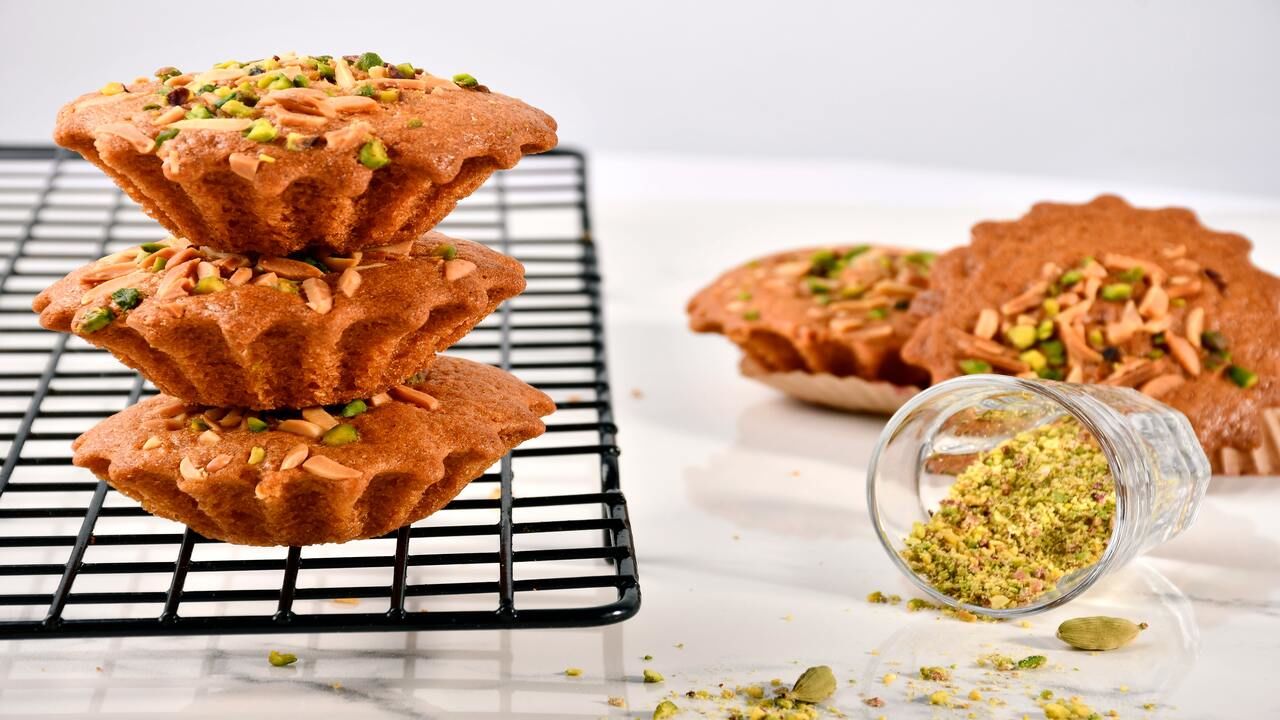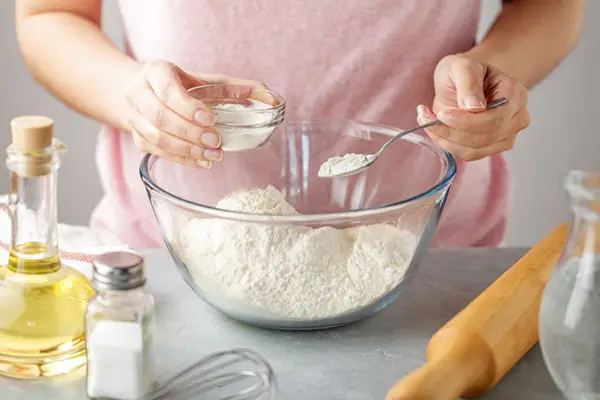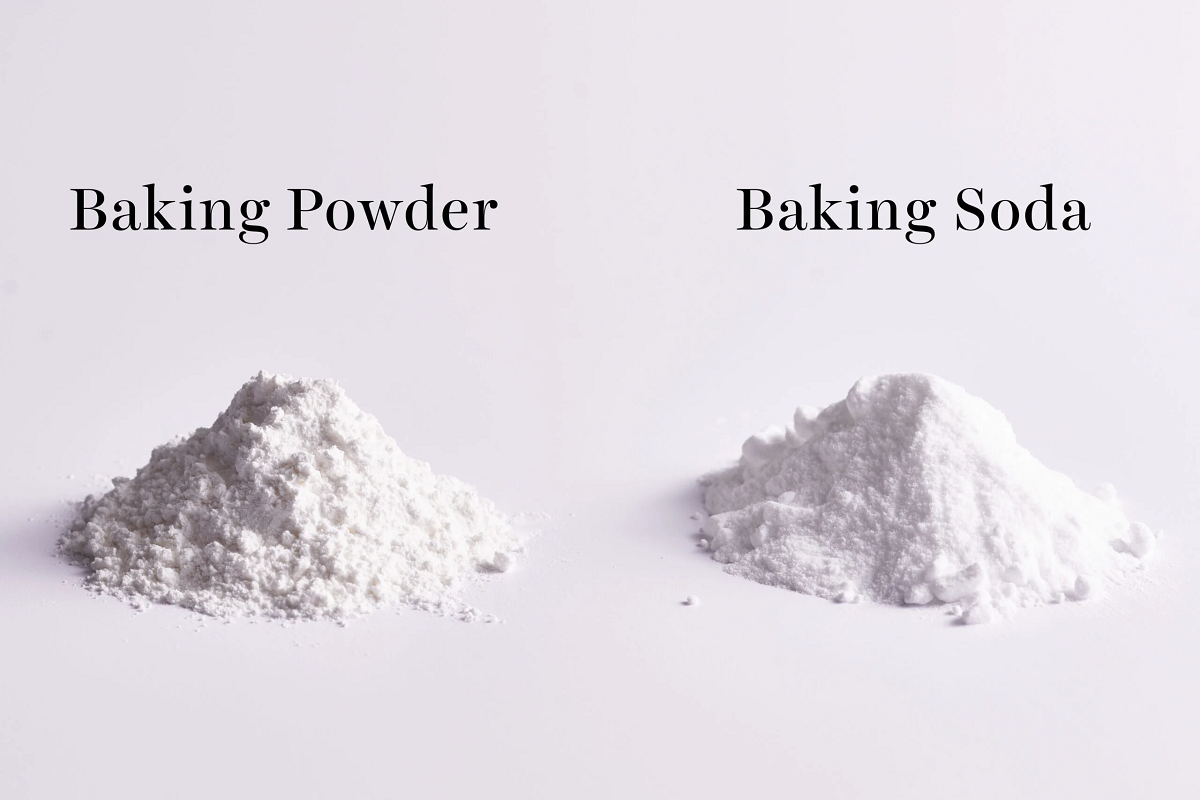The difference between baking powder and baking soda in cooking and baking sweets

Title: The difference between baking powder and baking soda in cooking and baking sweets
Baking soda and baking powder are two common ingredients in cooking, both of which are used to raise the dough and create a light and fluffy texture in pastries and breads. However, despite the nominal similarity, there are key differences between the two ingredients that are essential to understand in order to achieve the best results in cooking.

The difference between baking powder and baking soda
The main difference between the combination of baking powder and baking soda is in the ingredients and how they work:
baking powder:
It is a mixture of three ingredients: baking soda, weak acid (like cream of tartar) and starch.
baking soda:
It is pure sodium bicarbonate (NaHCO3).
The difference between baking powder and baking soda
In the wonderful world of cooking, baking soda and baking powder are two incomparable stars that, with their chemical magic, bring breads and pastries to the peak of glory and fluffiness. But despite the name similarity, these two lovely ingredients have subtle differences in performance and use, which are essential to know in order to create cooking masterpieces.

similarities:
Bubble Warriors: Both of our hero ingredients release tiny, invisible soldiers of carbon dioxide in the dough, which in the battle against the heat, create a volume of happy and passionate bubbles, and thus, the cake They send the bread to the realm of puffy clouds.
Activated by heat: These brave soldiers wake up in the heat of the baking oven and give the epic call. The pleasant heat activates them and sets the stage for the release of lovely carbon dioxide bubbles.
The differences:
Josh Shirin, A Lone Soldier: Josh Shirin comes to the battlefield, single and alone, waiting for his acid sidekick to join him. This acidic companion can be things like yogurt, lemon or vinegar. With the union of these two friends, baking soda shows off its power and releases happy bubbles.
Baking powder, a united army: But baking powder is a united army and ready for battle. This army consists of both baking soda soldiers and acid sidekicks. Because of this, baking powder does not need external acid help and can release its hero bubbles in any condition, whether in acidic or neutral territory.
Taste: Baking soda sometimes leaves a bitter aftertaste at the height of the battle. But baking powder is a conscientious soldier who does not leave a bitter taste on the battlefield and keeps the soldiers’ palate sweet.
Battleground: Baking soda mostly fights in lands where acid minions are naturally present, such as Chocolate Cake Realm or Banana Cake Realm. Baking powder, on the other hand, is a flexible soldier and can be used in any arena, from the land of vanilla cake to the realm of biscuits, to puff up breads and pastries.
Longevity: Baking soda is an old soldier and will stay with you forever. But the baking powder is a younger soldier and with the passage of time, it gradually weakens and needs to be replaced.
Differences and similarities between baking powder and baking soda in baking:
It is true that both baking soda and baking powder are used for puffing cookies, but there are subtle differences in their performance and use that are essential to know in order to achieve the best results in baking.
similarities:
Creating puffs: Both ingredients cause puffing and bulking of sweets by releasing carbon dioxide gas due to heat.
Heat Activation: Both materials require heat to activate, which is why they must be activated in the oven or during cooking.
The differences:
Composition: Baking powder consists of a mixture of baking soda, a weak acid (such as cream of tartar), and sometimes other ingredients such as starch. While baking soda only contains sodium bicarbonate.
Activation: Baking soda requires an acidic substance such as yogurt, buttermilk, lemon or vinegar to activate. While baking powder does not need an additional acidic substance due to the presence of acid in its composition, it is also activated in neutral environments.
Taste: Baking soda can give a bitter taste to sweets if used in excess. Baking powder does not have a bitter taste because the acid is neutralized by sodium bicarbonate.
Application:

Baking Soda: Usually used in recipes that contain acidic ingredients such as yogurt, chocolate, or fruit.
Baking powder: It is used in a wider range of recipes, especially in cases where there is no acidic substance or its amount is low.
Durability: Baking powder is less durable than baking soda and loses its strength over time.
Conclusion :
If the recipe contains acidic ingredients such as yogurt or lemon juice: you can use baking soda or baking powder.
If the recipe does not contain acidic ingredients or the amount of acid is low: use baking powder.
If you prefer a neutral taste: use baking powder.
Follow the recipe: Pay close attention to the amount of baking powder or baking soda mentioned in the recipe. Using too much can cause a bitter taste and unpleasant texture.
Substitution: If there is no baking powder, you can use baking soda with an acidic substance such as vinegar or lemon juice. For every 1 teaspoon of baking powder, use ¼ teaspoon of baking soda plus ¼ teaspoon of acid.
Freshness: Use fresh baking powder as it loses its potency over time.
Choosing between baking soda and baking powder depends on the recipe and the ingredients you have available. By understanding their differences and using each one correctly, you can



